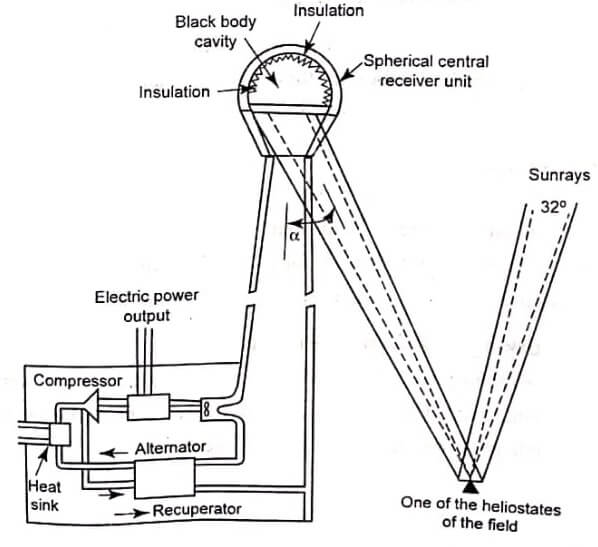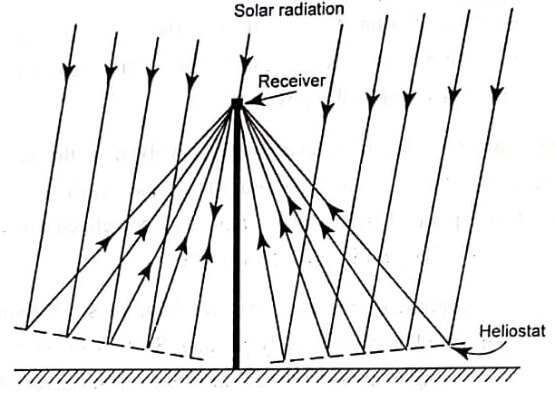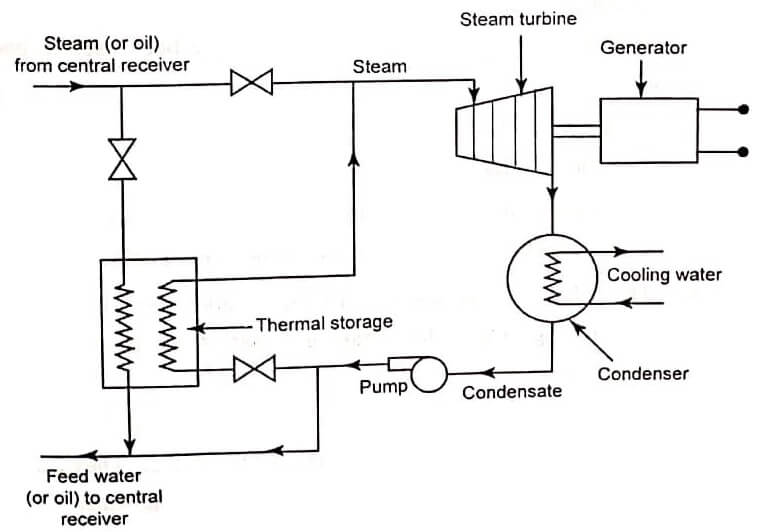Parabolic trough
This type of collector is generally, used in solar power plants. A trough shaped parabolic. reflector is used to concentrate sunlight on an insulated tube (Dewar tube) or heat pipe, placed at the focal point, containing coolant which transfers heat from the collectors to the boilers in the power station.
Parabolic dish
It is the most powerful type of collector which concentrates sunlight at a single, focal point, via one or more parabolic dishes which are arranged in a similar fashion to a reflecting telescope focuses starlight, or a dish antenna focuses radio waves. This geometry may be used in solar furnaces and solar power plants.
There are two important parameters involved in the design of a parabolic dish. The shape of a parabola is defined such that incoming rays which are parallel to the dish’s axis will be reflected toward the focus, no matter where on the dish they arrive.

The second parameter is, the light rays from the sun arriving at the earth’s surface are almost completely parallel. So, if dish can be aligned with its axis pointing at the sun, almost all of the incoming radiation will be reflected towards the focal point of the dish most losses are due to imperfections in the parabolic shape and imperfect reflection.
In some power plant designs, a stirling engine coupled to a bungs dynamo, is placed at the focus of the dish, which absorbs the heat of the incident solar radiation, and converts it into electricity.
Solar pyramids
Another design is a pyramid shaped structure, which works by drawing in air, heating it with solar energy and moving it through turbines to generate electricity. Solar pyramids have been built in places like Australia. Currently India is building such pyramids.
Working Of A Central Receiver
The incoming solar radiation is focused to a central receiver or a boiler mounted on a tall tower using thousands of plane reflectors which are steerable about two axes and are called heliostats.

Image shows a schematic view of an electric power plant using the gas turbine or gas turbine power plant working on a Brayton cycle. The mirrors are installed on the ground are oriented so as to reflect the direct beam radiation into an absorber or receiver which is mounted on the top of a tower located near the center of the field of mirrors to produce high temperature.
Beam radiation incident in boiler absorbed by black pipes in which working fluid circulates and is heated. The working fluid is allowed to drive a turbine and produce mechanical energy.
The turbine which is coupled to an alternator produces electrical energy. Suitable heat storage is also provided to supply the heat energy during the period of cloudiness.
Fig shows the electric power generator using thermal storage.

Advantages:
- It gives very high temperatures. High temperatures are suitable for electricity generation using conventional methods like steam turbine or some direct high temperature chemical reaction
- Good efficiency. By concentrating sunlight current systems can get better efficiency than simple solar cells.
- A larger area can be covered by using relatively inexpensive mirrors rather than using expensive solar cells.
- Concentrated light can be redirected to a suitable location via optical fiber cable. For example: illuminating buildings, like here (Hybrid Solar Lighting).
- Heat storage for power production during cloudy and overnight conditions can be accomplished, often by underground tank storage of heated fluids. Molten salts have been used to good effect.
- Solar heat collectors can be quickly installed in under an hour. One such model is called a window box.
- Solar heat collectors can also transfer that heat to water. This energy can be used in solar water heaters and pools.
- The National Renewable Energy Laboratory is currently researching ways for making solar heat collectors less expensive.
- Solar heat collectors can really help save money by enabling you to keep the heat off many days of the winter. They can also use the sun to save money and energy by heating water.
Disadvantages:
- Concentrating systems require sun tracking to maintain Sunlight focus at the collector.
- Inability to provide power in diffused light conditions. Solar Cells are able to provide some output even if the sky becomes a little bit cloudy, but power output from concentrating systems drop drastically in cloudy conditions as diffused light cannot be concentrated passively.
- See More : Types of Gas turbine
- See More : Magnetic confinement fusion reactor
- See More : Supercritical water cooled reactor





